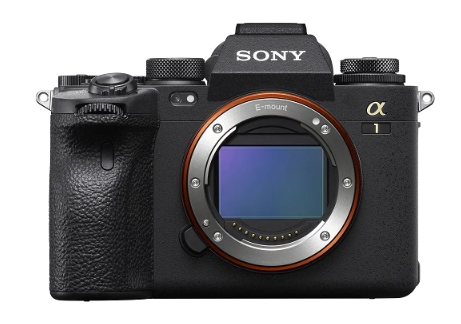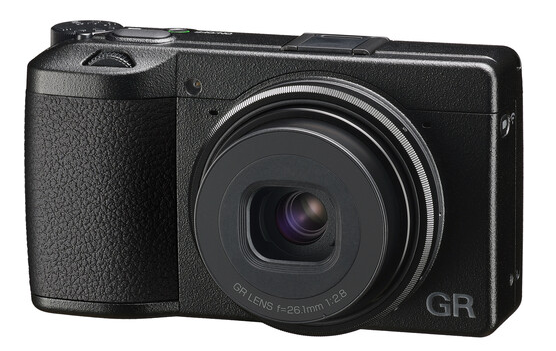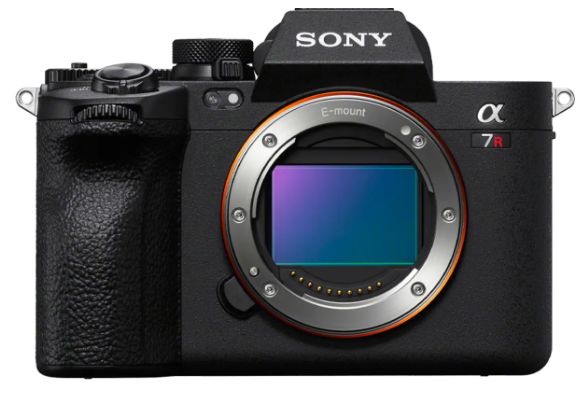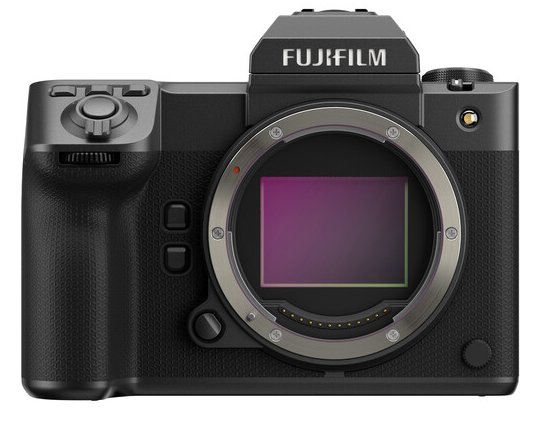Choosing the right camera helps you take better pictures. It’s like picking the right tool for a job—it makes everything easier. Whether you’re new to taking photos or have done it for a while, the right camera helps you show the world how you see it.
A good camera doesn’t just snap pictures; it makes them look amazing. Colors are brighter, details are clearer, and memories stay sharp. So, when you pick a camera, think about what you like to take pictures of. Do you enjoy taking photos of people, nature, or everyday things? Different cameras are good at different things.
Some cameras are small and easy to carry, great for when you’re on the move. Others are bigger and have more features, perfect if you want to get serious about photography. The key is finding a camera that fits how you like to take pictures and helps you get the best shots.
Understanding Camera Types
When you want to take great pictures, picking the right camera is really important. There are different types of cameras, and each one does something special. Let’s look at what makes each one different.
- DSLR Cameras: DSLR cameras are popular because they take clear pictures. You can change the lens, which helps you take different kinds of photos. These cameras are strong and last a long time. But they are big and heavy, so they can be hard to carry.
- Mirrorless Cameras: Mirrorless cameras are like DSLRs but smaller and lighter. They still take great pictures and are easy to carry. These cameras are fast and work well for action shots. The battery doesn’t last as long, but they’re getting better.
- Compact Cameras: Compact cameras are small and simple to use. They’re great for taking quick pictures without much fuss. You can’t change the lens, and the pictures might not be as sharp, but they’re easy to take anywhere.
- Action Cameras: Action cameras are made for adventure. They’re tiny, tough, and can go underwater. They take wide shots, perfect for capturing everything around you. But they don’t take the clearest pictures, especially when it’s dark.
Related post: Best Vlogging Cameras in 2024
Best Cameras for Different Photography Types
Choosing the right camera can be a big decision. Different cameras work better for different kinds of photography. This guide will help you pick the best camera for what you love to shoot, whether you’re just starting out, a professional, or someone with a specific photography interest.
Best Cameras for Beginners
Canon EOS R100: An Affordable Entry-Level Mirrorless Camera

The Canon EOS R100 is perfect for beginners. It’s easy to use and light to carry. With a 24.1 MP sensor, it takes clear, bright pictures. The camera has simple controls that won’t confuse you. But it doesn’t have some features like a flip-out screen or 4K video without cropping. This camera is a great way to start your photography journey.
| SPECIFICATIONS | Type: Mirrorless Sensor size: APS-C (24.1MP) Resolution: 4K/25p, Full HD 60p Viewfinder: Electronic (2.36M dots), Connectivity: Wi-Fi, Bluetooth, USB-C Max movie resolution: 4K/25p and Size, weight: 116 x 88 x 59mm, 429g. |
| REASONS TO BUY | + Great image quality + User-friendly interface + Compact and lightweight |
| REASONS TO AVOID | – Limited 4K video – No in-body image stabilization |
| BUY IT IF: | DON’T BUY IT IF: |
|---|---|
| ✅ You’re a beginner: The EOS R100 is perfect for those new to photography, offering great features at an affordable price. | ❌ You focus on video work: The cropped 4K and lack of advanced video features may limit its use for serious videography. |
| ✅ You need a portable camera: Its compact size makes it easy to carry around for travel and casual shooting. | ❌ You need image stabilization: Without in-body stabilization, you’ll rely on lenses with IS for stable shots. |
Nikon Z30: A Compact Camera Designed for Content Creators

The Nikon Z30 is another great camera for beginners, especially if you want to make videos. It has a 20.9 MP sensor and can record 4K video without cutting off part of the picture. The screen flips out, so you can see yourself while filming. This camera costs a bit more than the Canon R100 but is worth it if you want to take both photos and videos.
| SPECIFICATIONS | Type: Mirrorless Sensor size: APS-C (20.9MP) Resolution: 4K/30p, Full HD 120p Viewfinder: None Connectivity: Wi-Fi, Bluetooth, USB-C Max movie resolution: 4K/30p Size, weight: 128 x 74 x 60mm, 405g |
| REASONS TO BUY | + Excellent video quality + Vlogger-friendly design + Affordable |
| REASONS TO AVOID | – No headphone jack – No viewfinder |
| BUY IT IF: | DON’T BUY IT IF: |
|---|---|
| ✅ You’re a content creator: The Z30’s features are tailored for vloggers and YouTubers, making it a solid choice for content creation. | ❌ You prefer shooting with a viewfinder: The absence of a viewfinder might be a dealbreaker if you frequently shoot in bright outdoor settings. |
| ✅ You want portability: Its lightweight and compact design makes it easy to carry and use on the go. | ❌ You need advanced audio controls: The lack of a headphone jack could be limiting if precise audio monitoring is crucial for your work. |
Best Cameras for Professional Photographers
Canon EOS R5 Mark II: A High-End Mirrorless Camera for Professionals

The Canon EOS R5 Mark II is a strong camera for professionals. It has a 45 MP sensor that captures every detail. You can also shoot 8K video, which is great for high-end projects. The camera focuses fast and accurately, keeping your subject sharp. It’s pricey and might overheat if you shoot long videos, but it’s a top pick for high-quality work.
| SPECIFICATIONS | Type: Mirrorless Sensor size: Full-frame (45MP) Resolution: 8K/60p, 4K/120p, Full HD 120p Viewfinder: Electronic (5.76M dots) Connectivity: Wi-Fi, Bluetooth, USB-C, HDMI Max movie resolution: 8K/60p Size, weight: 138 x 98 x 88mm, 738g |
| REASONS TO BUY | + Incredible image quality + Advanced video capabilities + Robust build quality |
| REASONS TO AVOID | – High price point – Potential overheating |
| BUY IT IF: | DON’T BUY IT IF: |
|---|---|
| ✅ You’re a professional photographer or filmmaker: The R5 Mark II is packed with high-end features tailored for professional work in both photography and videography. | ❌ You’re on a budget: The cost might be prohibitive for hobbyists or those not needing cutting-edge features. |
| ✅ You need top-tier video quality: The ability to shoot in 8K and 4K at high frame rates makes it perfect for high-end video production. | ❌ You require long, uninterrupted video recording: The potential for overheating in 8K and 4K modes may be a concern for long takes. |
Sony Alpha 1: The Ultimate Hybrid Camera for Professionals

The Sony Alpha 1 is another top camera for pros. It has a 50.1 MP sensor and can shoot 8K video. What’s special about the Alpha 1 is its speed—it can shoot up to 30 photos per second. This makes it perfect for capturing action. It’s a bit expensive and complex, but it’s worth it for professionals who need both quality and speed.
| SPECIFICATIONS | Type: Mirrorless Sensor size: Full-frame (50.1MP) Resolution: 8K/30p, 4K/120p, Full HD 240p Viewfinder: Electronic (9.44M dots) Connectivity: Wi-Fi, Bluetooth, USB-C, HDMI Max movie resolution: 8K/30p Size, weight: 129 x 97 x 81mm, 737g |
| REASONS TO BUY | + Outstanding image quality + Blazing fast performance + Versatile video capabilities |
| REASONS TO AVOID | – High cost – Complex for beginners |
| BUY IT IF: | DON’T BUY IT IF: |
|---|---|
| ✅ You need the best of both worlds: The Alpha 1 excels in both high-resolution photography and advanced video recording, making it the perfect hybrid camera for professionals. | ❌ You’re a casual photographer: The high price and extensive features may be unnecessary for those who don’t need professional-level performance. |
| ✅ You shoot fast action: Its high-speed shooting and advanced autofocus system make it ideal for capturing fast-moving subjects. | ❌ You’re looking for a simple camera: The complexity and depth of features may be daunting for beginners or those seeking a straightforward shooting experience. |
Best Cameras for Street Photography
Fujifilm X100V: A Stylish and Compact Camera for Street Photography

The Fujifilm X100V is great for street photography. It’s small and easy to carry, making it perfect for taking pictures on the go. The camera has a 26.1 MP sensor and a fixed 23mm lens, which is good for capturing wide scenes. Its simple and stylish design, along with both optical and electronic viewfinders, gives you flexibility in framing your shots. The only downside is that you can’t change the lens, but the quality makes up for it.
| SPECIFICATIONS | Type: Compact Sensor size: APS-C (26.1MP) Resolution: 4K/30p, Full HD 120p Viewfinder: Hybrid (Optical/Electronic) Connectivity: Wi-Fi, Bluetooth, USB-C Max movie resolution: 4K/30p Size, weight: 128 x 75 x 53mm, 478g |
| REASONS TO BUY | + Classic design + High-quality fixed lens + Hybrid viewfinder |
| REASONS TO AVOID | – Fixed lens limitation – Limited video features |
| BUY IT IF: | DON’T BUY IT IF: |
|---|---|
| ✅ You love street photography: The X100V is perfect for capturing candid moments with its compact size and high-quality lens. | ❌ You need interchangeable lenses: The fixed 23mm lens may not be versatile enough if you require different focal lengths for your photography. |
| ✅ You appreciate classic design: Its retro look combined with modern features appeals to photographers who value both style and substance. | ❌ You prioritize video recording: The video capabilities, while decent, might not satisfy those looking for advanced video features. |
Ricoh GR IIIx: A Compact Camera for Street and Documentary Photography

The Ricoh GR IIIx is another top choice for street photography. It’s small enough to fit in your pocket, but it has a strong 26.1 MP sensor. The fixed 40mm lens is perfect for capturing everyday moments with clear detail. This camera is fast and quiet, making it easy to take photos without drawing attention. Like the Fujifilm X100V, the GR IIIx doesn’t have a changeable lens, but it’s perfect for photographers who want a simple, high-quality camera.
| SPECIFICATIONS | Type: Compact Sensor size: APS-C (24.2MP) Resolution: Full HD 60p Viewfinder: None (optional external viewfinder available) Connectivity: Wi-Fi, Bluetooth, USB-C Max movie resolution: Full HD 60p Size, weight: 109 x 62 x 35mm, 262g |
| REASONS TO BUY | + Superb image quality + High-quality 40mm equivalent lens + Compact and discreet |
| REASONS TO AVOID | – Limited video capabilities – No built-in viewfinder |
| BUY IT IF: | DON’T BUY IT IF: |
|---|---|
| ✅ You’re a street photographer: The GR IIIx is tailored for street and documentary photography, with its compact design and excellent lens. | ❌ You need 4K video: The Full HD video might not meet the needs of those who require higher-resolution video recording. |
| ✅ You want portability: Its lightweight build makes it easy to carry everywhere, ensuring you’re always ready to capture the moment. | ❌ You prefer using a viewfinder: If you rely heavily on a viewfinder for composition, the GR IIIx’s lack of one might be limiting. |
Best Cameras for Portrait Photography
Sony Alpha 7R V: A High-Resolution Mirrorless Camera for Professionals

The Sony Alpha 7R V is ideal for portraits. It has a 61 MP sensor that captures every detail, perfect for close-up shots of people. The camera has advanced autofocus that tracks your subject’s eyes, making sure the face is always sharp. It’s a bit expensive and produces large files, but the quality of the images makes it worth it.
| SPECIFICATIONS | Type: Mirrorless Sensor size: Full-frame (61MP) Resolution: 8K/24p, 4K/60p, Full HD 120p Viewfinder: Electronic (9.44M dots) Connectivity: Wi-Fi, Bluetooth, USB-C, HDMI Max movie resolution: 8K/24p Size, weight: 131 x 97 x 82mm, 723g |
| REASONS TO BUY | + Incredible resolution + Advanced autofocus system + High-quality video |
| REASONS TO AVOID | – Expensive – Large file sizes |
| BUY IT IF: | DON’T BUY IT IF: |
|---|---|
| ✅ You need top-tier image quality: The 61MP sensor is perfect for professionals who need the highest level of detail for their work. | ❌ You’re on a budget: The cost may be prohibitive for those who don’t need the extreme resolution and advanced features. |
| ✅ You require advanced autofocus: The AI-driven autofocus system is ideal for capturing fast-moving subjects with precision. | ❌ You need a more compact setup: The larger body and the demands of high-resolution photography might not be ideal for travel or casual use. |
Nikon Z8: A Powerful Hybrid Camera for Professionals

The Nikon Z8 is another great camera for portraits. It has a 45.7 MP sensor, which offers a good mix of resolution and speed. This camera captures fine details and skin tones beautifully. It’s a little bigger than some other options, but its performance makes it a top choice for portrait photographers.
| SPECIFICATIONS | Type: Mirrorless Sensor size: Full-frame (45.7MP) Resolution: 8K/60p, 4K/120p, Full HD 120p Viewfinder: Electronic (3.69M dots) Connectivity: Wi-Fi, Bluetooth, USB-C, HDMI Max movie resolution: 8K/60p Size, weight: 144 x 118 x 83mm, 910g |
| REASONS TO BUY | + High-resolution sensor + Advanced video capabilities + Rugged build quality |
| REASONS TO AVOID | – High price point – Heavy and large |
| BUY IT IF: | DON’T BUY IT IF: |
|---|---|
| ✅ You’re a professional photographer or filmmaker: The Z8 offers top-tier features for those who require both high-resolution images and advanced video capabilities. | ❌ You’re looking for a lightweight camera: The Z8’s size and weight might be too much for those seeking a more portable option. |
| ✅ You need durability: Its robust construction makes it suitable for challenging environments, ensuring reliability in tough conditions. | ❌ You’re on a budget: The cost and feature set may be overkill for casual users who don’t need professional-grade performance. |
Best Cameras for Landscape Photography
Nikon Z9: A Flagship Mirrorless Camera for Professionals

The Nikon Z9 is perfect for landscape photography. It has a 45.7 MP sensor and a strong build, making it great for outdoor shoots. The camera captures a lot of detail, so it’s perfect for wide, sweeping landscapes. It’s also weather-sealed, so you can take it into harsh conditions without worry. The Z9 is heavy, but the quality makes it a great choice for serious photographers.
| SPECIFICATIONS | Type: Mirrorless Sensor size: Full-frame (45.7MP) Resolution: 8K/60p, 4K/120p, Full HD 120p Viewfinder: Electronic (3.69M dots) Connectivity: Wi-Fi, Bluetooth, USB-C, HDMI Max movie resolution: 8K/60p Size, weight: 149 x 149 x 91mm, 1340g |
| REASONS TO BUY | + Exceptional image quality + Rugged and durable + Top-tier video capabilities |
| REASONS TO AVOID | – Bulky and heavy – High cost |
| BUY IT IF: | DON’T BUY IT IF: |
|---|---|
| ✅ You’re a professional seeking the best: The Z9 is ideal for professionals who need the highest level of performance in both photography and videography. | ❌ You prefer a more portable camera: The Z9’s size and weight could be cumbersome for those who need a lighter setup. |
| ✅ You require durability and reliability: Its rugged construction ensures it can handle the toughest environments, making it perfect for outdoor and action photography. | ❌ You’re on a tight budget: The flagship features come at a premium, making it an investment more suited to professionals than casual shooters. |
Fujifilm GFX 100 II: A Medium Format Powerhouse for Unmatched Image Quality

For those who need the highest image quality, the Fujifilm GFX 100 II’s 102 MP sensor offers stunning detail. This camera is great for capturing vast landscapes with unmatched clarity. It’s slower to use and more expensive than most other cameras, but the image quality is unbeatable, especially if you want to make large prints.
| SPECIFICATIONS | Type: Mirrorless Medium Format Sensor size: Medium format (102MP) Resolution: 4K/60p, Full HD 120p Viewfinder: Electronic (9.44M dots) Connectivity: Wi-Fi, Bluetooth, USB-C, HDMI Max movie resolution: 4K/60p Size, weight: 150 x 104 x 87mm, 940g |
| REASONS TO BUY | + Stunning image quality + Medium format advantages + Advanced video capabilities |
| REASONS TO AVOID | – Bulkier than full-frame – High cost |
| BUY IT IF: | DON’T BUY IT IF: |
|---|---|
| ✅ You need the highest resolution: The 102MP sensor is perfect for commercial photographers, fine artists, and anyone needing the utmost in image quality. | ❌ You’re looking for portability: The larger body and heavier weight may not be suitable for those needing a more portable setup. |
| ✅ You want medium format: The GFX 100 II provides the medium format experience with modern mirrorless convenience, offering a unique and powerful tool for professional photographers. | ❌ You’re on a budget: The cost of the camera and compatible lenses is high, making it more suitable for professionals who can justify the investment. |
Finding the right camera depends on what you love to shoot. Whether you’re just starting out or you’re a professional, there’s a camera that fits your needs. From beginner-friendly models like the Canon EOS R100 to high-end cameras like the Sony Alpha 1, each camera has something special to offer.
Comparison Table
| Category | Camera Model | Sensor | Resolution | Video | Key Features | Pros | Cons |
|---|---|---|---|---|---|---|---|
Best for Beginners | Canon EOS R100 | APS-C | 24.1 MP | 4K (cropped) | Simple controls, compact | Easy to use, good image quality | Cropped 4K video, fixed screen |
| Nikon Z30 | APS-C | 20.9 MP | 4K (full-width) | Flip-out screen, video-friendly | Great for video, flexible screen | No electronic viewfinder, limited lenses | |
| Best for Professionals | Canon EOS R5 Mark II | Full-frame | 45 MP | 8K | Advanced autofocus, weather-sealed | High-resolution, excellent video quality | Expensive, potential overheating in 8K mode |
| Sony Alpha 1 | Full-frame | 50.1 MP | 8K | 30 fps burst shooting, fast autofocus | High speed, top-notch image quality | Very expensive, complex to use | |
| Best for Street Photography | Fujifilm X100V | APS-C | 26.1 MP | 4K | Fixed 23mm lens, retro design | Compact, stylish, great image quality | No interchangeable lenses |
Ricoh GR IIIx | APS-C | 26.1 MP | 1080p | Fixed 40mm lens, very portable | Discreet, fast, easy to carry | No viewfinder, fixed lens | |
| Best for Portraits | Sony Alpha 7R V | Full-frame | 61 MP | 4K | Eye-tracking AF, high resolution | Superb detail, great for studio work | Expensive, large file sizes |
| Nikon Z8 | Full-frame | 45.7 MP | 8K | Versatile, excellent color reproduction | Good balance of resolution and speed | Slightly bulky | |
Best for Landscapes | Nikon Z9 | Full-frame | 45.7 MP | 8K | Weather-sealed, robust build | Great for outdoor shoots, excellent dynamic range | Heavy, high cost |
| Fujifilm GFX 100 II | Medium Format | 102 MP | 4K | Unmatched detail, medium format quality | Stunning image quality, perfect for large prints | Very expensive, slower handling |
Additional Resources and Tips
Must-Have Accessories for Your Camera
When you buy a camera, getting the right accessories can make a big difference. If you’re using a Canon EOS R100 or Nikon Z30, you should start with extra batteries and a camera bag. These help you keep shooting longer without running out of power or damaging your camera. If you have a more advanced camera like the Fujifilm GFX 100 II or Fujifilm GFX 100 II, you’ll need high-speed memory cards and a strong tripod. These tools let you take better photos and videos by making sure your camera is steady and can store large files quickly.
Simple Photography Tips
Learning how to use your camera doesn’t have to be hard. If you’re a beginner, start by taking photos in good light. Use your camera’s auto modes to get the hang of it. Once you feel comfortable, try using manual settings to control things like brightness and focus. If you’re into street photography and using a camera like the Fujifilm X100V or Ricoh GR IIIx, always be ready to snap a photo. Pay attention to how you frame your pictures and make sure the lighting looks good. These small steps can make your photos look much better.
Best Editing Software
Editing your photos is important to make them look their best. For beginners with a Canon EOS R100 or Nikon Z30, Adobe Lightroom is a great tool. It’s simple to use and helps you improve your photos quickly. For more advanced users with cameras like the Canon EOS R5 Mark II or Sony Alpha 1, Adobe Photoshop is the best choice. It has powerful tools that let you make detailed changes to your photos. If you’re using a Fujifilm camera, Capture One is a good option because it handles Fujifilm’s colors very well. Both programs help you get the most out of your photos, whether you’re just starting or have been taking pictures for a long time.
These tips and tools can help you get the most out of your camera, whether you’re just learning or have been taking photos for years. Make sure you have the right accessories, practice taking good photos, and use the best software to edit them. This way, your photos will always look their best.
Conclusion
Choosing the best camera depends on your needs and what excites you about photography. Beginners might start with simple models like the Canon EOS R100 or Nikon Z30, which are easy to use and great for learning. If you’re more experienced, cameras like the Canon EOS R5 Mark II or Sony Alpha 1 offer advanced features to help you push your creativity further. No matter your level, practice is key. Choose a camera that feels right and can grow with you. The best camera is the one that inspires you to keep shooting.


